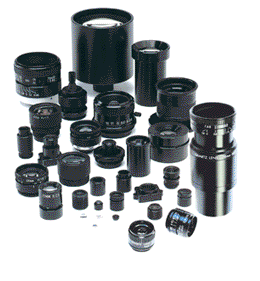High resolution lenses for machine vision — standard and custom lens design
Advances In Cell Phone Camera Technology
High Resolution Lenses for machine vision, instrumentation, inspection and vibration-sensitive applications. Standard and custom hi-res lens assemblies.

Camera Technology
When the first cameras showed up in cell phones in the late 1990s, the images they captured were grainy and of poor quality at best, that is, if you made the decision to purchase a cell phone that boasted a camera. In today’s market, there are very few phones that don’t come automatically equipped with cameras and the pixels captured and the technology behind these cameras has grown by leaps and bounds in less than a decade.
Advances in the cell phones as well as the technology housed in the phone and the lenses in the cameras have moved the cell phone camera into the realm in which professional images can be captured. Today’s camera phones feature megapixels in the double digits, are equipped with optical zoom, red eye features, and the capability to shoot high definition video.
The core of the camera, whether in a cell phone or a DSLR model, is the CMOS and CCD technology. All cameras also need a lens, image sensors and hardware with which to process images. In a cell phone, all of this technology must be placed in a space that is smaller than the size of a dime!
CCD imaging is a long-established technology that transmits a signal from the pixel to the analog sensor output. The image is then processed in a separate location. Image quality is higher with CCD than with CMOS, but the CCD technology runs hotter and drains batteries more quickly. It is a rare exception that a phone uses CCD technology.
CMOS technology has been adapted to imaging and takes each pixel and performs individuals light-to-signal conversions, which are then passed to the digital processor. CMOS is more functional than CCD and requires less energy, making it ideal for use in cell phones and DSLR cameras. CMOS does have a disadvantage in that it scans images line by line rather than as a whole and if you’re trying to capture fast-motion shots the image could be distorted.
When it comes to lenses and camera technology, you can’t measure performance by mega pixels alone. While it’s true that higher megapixels will lead to a higher resolution image, the image must first pass through the lens and a high quality lens can add to a higher resolution photo.
As with all other components in a cell phone, the lens for the camera is limited by the size of the phone itself and because of this manufactures are making better sensors and manufacturing higher quality lens technologies. There are three basic types of lens: ground glass, polymer injected metal mold styles and wafer scale lenses. In ground-glass lenses, the glass is cast in a mold for the structure into which it will be housed, and is then machine tooled to the exact measurements. A ground glass lens is the highest quality, and the most expensive. The second method of injecting polymer into a metal mold for a lens allows for rapid production and a lower quality image being captured. Using silicon wafers to manufacture the wafer-scale lens is not of the same grade as ground glass, but is a higher quality than polymer-injected. Bottom line, when you’re buying a camera, megapixel is a good measure of quality but the lens through which the image passes is crucial to the resolution.
Universe Optics manufactures standard and custom CCD/CMOS lens assemblies for board and miniature camera applications including digital photography, video conferencing, surveillance, barcode scanning, machine vision and medical systems.